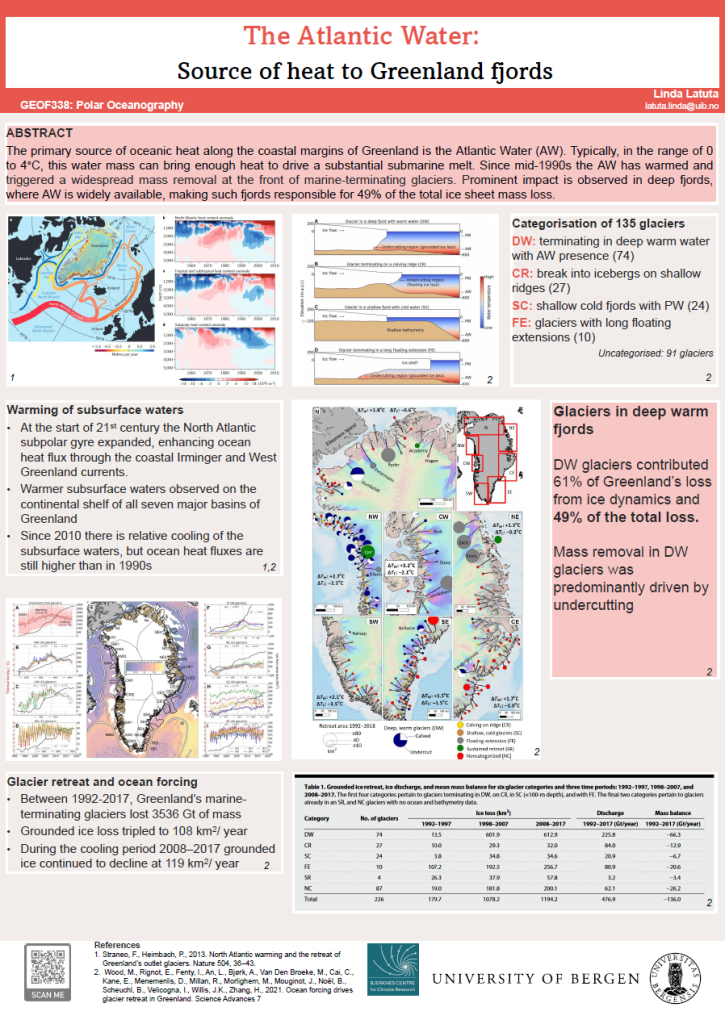Abstract
The Greenland Ice Sheet (GrIS) has rapidly been loosing mass since the 1990s. It is attributed to increased surface melting and accelerated ice flow, driven in equal parts by the atmosphere and the ocean. However, the ocean forcing has received growing attention in past studies as more evidence of warm water entering deep glacial fjords around Greenland became available. Many such fjords host marine-terminating glaciers, which undergo melting if warm waters encounter the ice front at depth. The primary source of oceanic heat along the coastal margins of Greenland is the Atlantic Water (AW). Typically, in the range of 0 to 4°C, this water mass can bring enough heat to drive a substantial submarine melt. However, given the vastness of the Greenlandic continent, its oceanographic setting varies geographically, and the AW has different properties and vertical distribution along the coasts of Greenland. Combined with varying topography, sea ice, and atmospheric conditions, the ocean forcing to GrIS is thus spatially non-uniform. This poster will outline the regional differences in AW properties along the Greenland continental shelf. We will discuss examples of well-studied glacial fjords along West and East Greenland, outlining the processes associated with the presence of AW.


